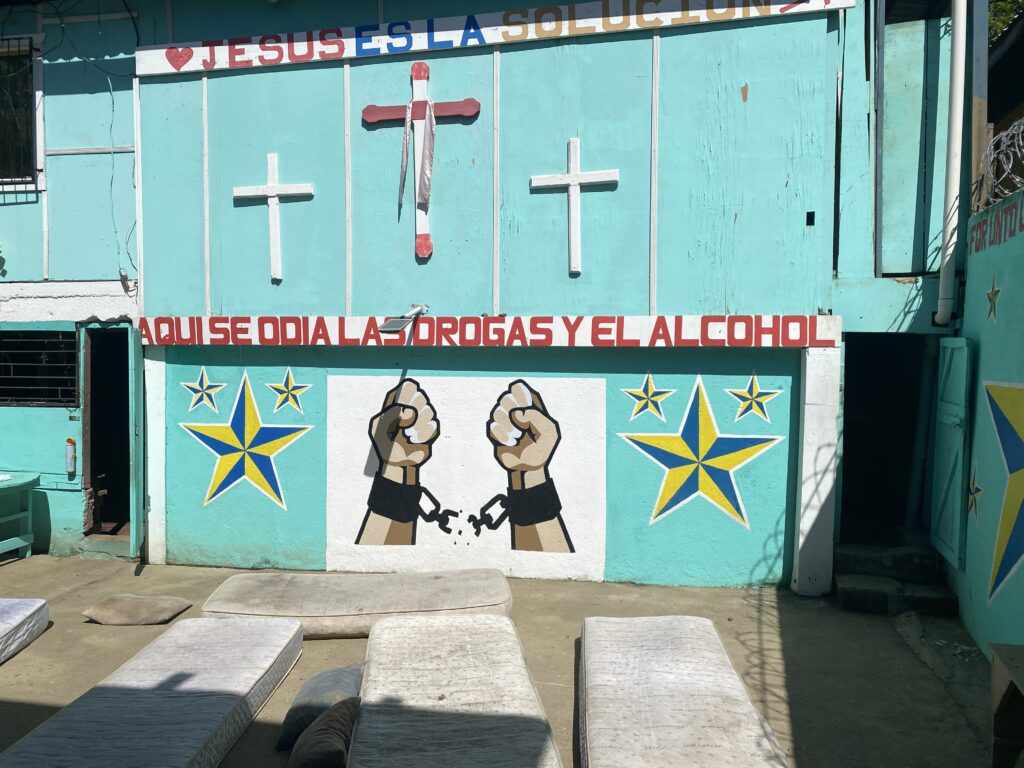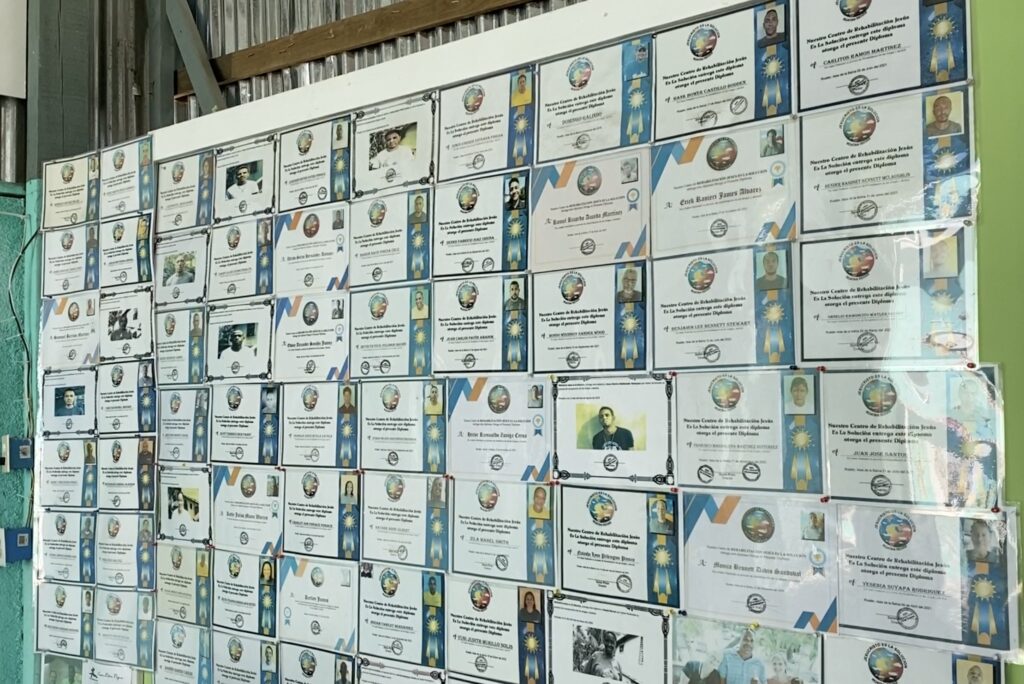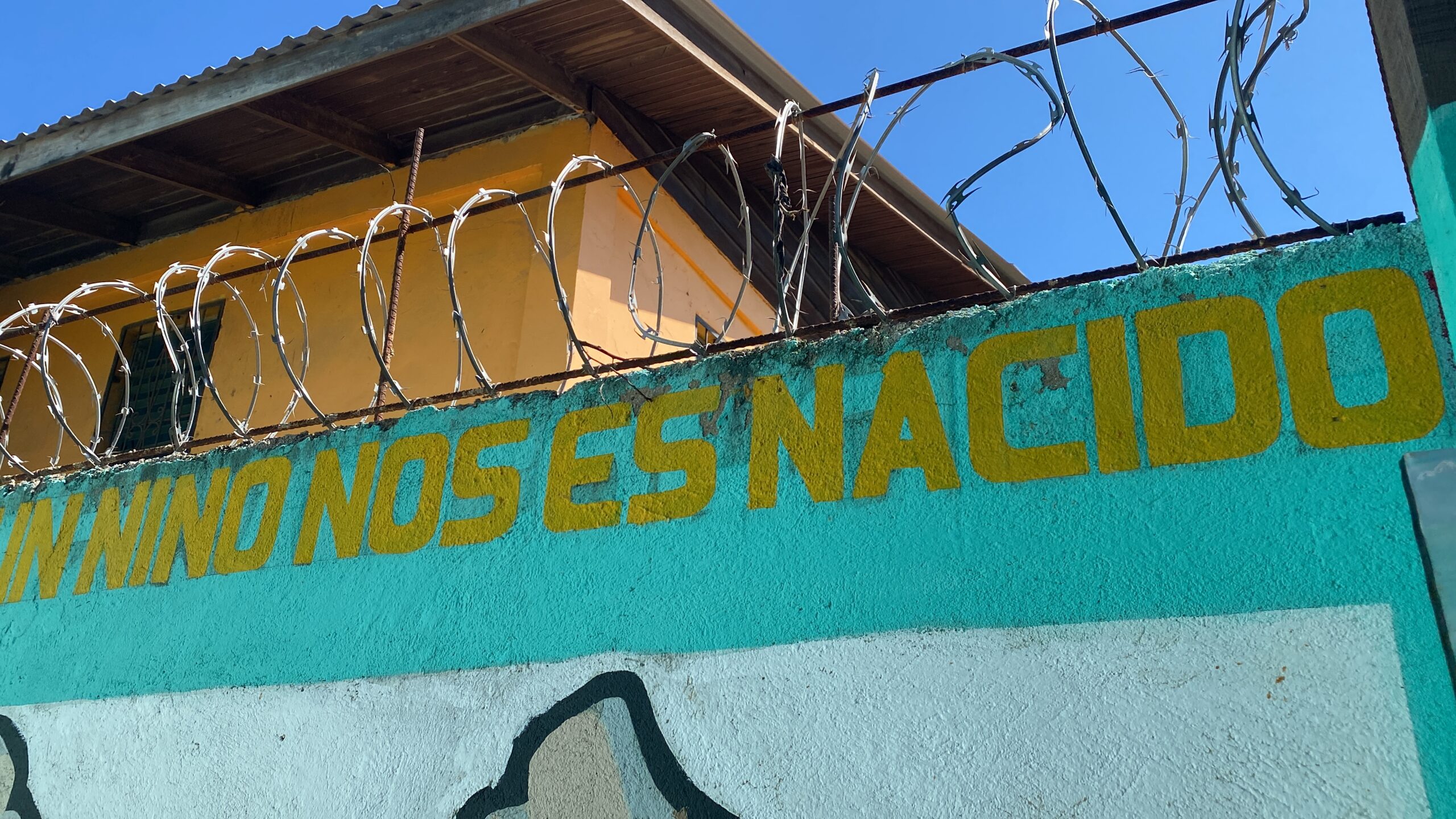They are from all walks of life as they enter the program, which hopefully will bring them to freedom with the help of Jesus. But some of them fail and return again and again. Join us when we visit the center with people who guide the addicts out of their intoxicated hell.

It’s a warm afternoon as we step into a yard encircled by high walls topped with barbed wire. The walls are adorned with quotes from the Bible and images of broken chains between clenched fists, symbolizing freedom and redemption. In one corner, an overfilled bookshelf, mostly stocked with Bibles, stands next to a water dispenser. Along the wall, three women sit in conversation, one cradling a child on her lap. Nearby, the men engage in work therapy, with today’s activity focused on carpentry. The rhythmic sounds of hammers hitting nails fill the air as they remove nails from wooden planks to build bunks for a new female area.
We have arrived at the “Jesus Es La Solucion Rehab Center” in Coxen Hole, Roatan, located near the public hospital that tragically burned down six months ago. The center’s director, Dylon Price, greets us warmly.
“The new bunks will provide the women with more privacy,” he explains when we inquire about the purpose of the reclaimed planks.


Since 2018, the center has rehabilitated around 500 people from the Bay Islands who struggle with alcoholism and drug addiction. Each participant must complete a seven-month program. Dylon, a former drug addict himself, has been working at the center since its inception.
“I use my own experience to help the clients, with support from Jesus. We pray together and help them find the Lord,” he shares.

Rehabilitation is a challenging journey. Nearly half of the clients return because they struggle to stay away from their addictions. The program works while they are removed from drugs and alcohol, but if they return to their old lives without making significant changes, they often relapse.
“If they return to their old life without any changes, they will most likely fail. They need to change their lives as well,” Dylon emphasizes.

However, many clients do succeed, as evidenced by a wall covered with certificates awarded upon their “graduation.” Currently, the center houses sixteen men and three women from diverse backgrounds. Dylon explains that if a client’s family can afford to pay for their stay, they do, but if not, no one is turned away. Many clients are poor and come from the mainland, seeking a better life. Without education, many end up unemployed, with the poorest working at the local dump, sorting recyclables to sell for survival.
Despite their struggles, the clients find joy in their shared experiences. Fellowship and a common destiny foster a sense of brotherhood and sisterhood. The future is uncertain, but they find solace in living for today.

The living quarters are organized across two floors, with steep stairs leading up to a tower adorned with a yellow five-pointed star. Below the tower is the dining facility, where Ricky, the cook, prepares dinner—one of three daily meals.
“Today, I’m making steamed fish island style,” he says with a broad smile.

“Drugs and alcohol are hated here,” is boldly painted in Spanish on the wall outside the dining facility, leaving no room for doubt.
Work therapy includes various jobs for different people and organizations, reinforcing the center’s ethos.
The rehab center is funded through Roatan Mission Fellowship, a Christian organization with several ongoing missions supported by donations.
The clients appear in good spirits, but we are mindful of their privacy. This journey is deeply personal, and while they allow us to take some pictures, their vulnerability is evident.
Written by: Roger Bjoroy-Karlsen

